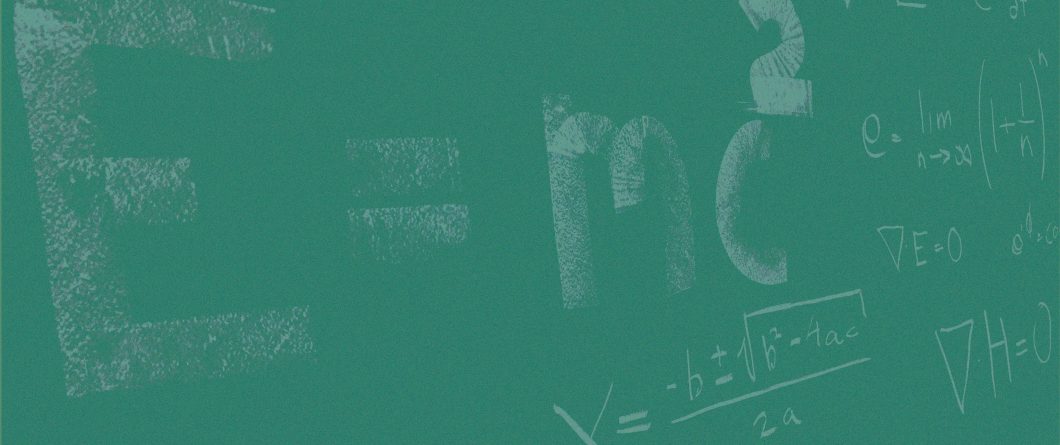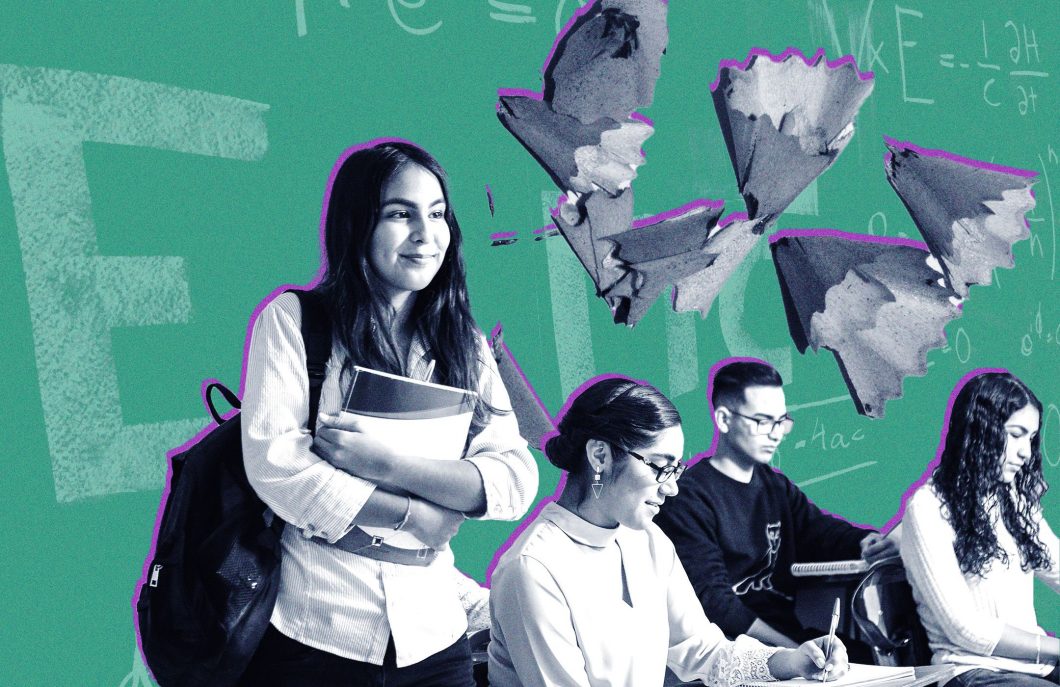Lists of books form the core of a real education, and we lose something without them.
Subconscious, habitual learning is far more common, complex, and important than we’d realized. This type of learning has been making a comeback everywhere except where it’s needed most—education.
Education is a vital discipline, but something has gone awry. For example, over the past decades, the U.S. has dropped to the bottom of international rankings for developed countries in math. This decline has coincided with education reform, a shift that has emphasized understanding and downplayed practice. Could something that sounds so sensible have possibly been responsible for the drop? The science that underpins our understanding of teaching and learning can help us answer this question.
The brain has two major learning systems. One is based on practice, and leads to fast, automatic behavior. This system is not accessible by conscious thought and is the source of intuition. The second system is based on deliberate thought—it is slow but flexible. You are consciously aware and can verbalize what you have learned. These two systems are roughly analogous to Nobel Prize winner Daniel Kahneman’s “thinking, fast and slow.”
Students need both fast and slow systems to learn well. Yet over the past fifty years, education, and math education in particular, has dismissed the importance of fast automaticity in learning—insisting instead that students can always look up whatever they need to know, and that drill equates to kill. But focusing primarily on slow, flexible thinking, appealing as it may be, is akin to asking a sprinter to run faster by hopping on only one leg.
As management consultant Peter Drucker has noted: “culture eats strategy for breakfast.” The culture of modern, Western approaches to teaching has long held that chasing after fluency kills student interest and creativity. Thus, although achieving fluency has now been written into current standards for teaching math, these standards are often minimized or ignored in actual practice by teachers. After all, for close to fifty years, fluency, especially in math, has been de-emphasized and even ridiculed by educational leaders.
Fast thinking often involves the procedural system, which deposits neural links in long-term memory primarily through the basal ganglia, a part of the brain with no conscious access. Slow thinking, on the other hand, uses the declarative system, which deposits links in long-term memory primarily through the hippocampus. This latter system allows you to “declare” what you’re learning—in other words, you’re conscious of it.
The Neuroscience of Fast and Slow Learning
An area toward the front of your brain, in the prefrontal cortex, monitors what you do and think. When you repeat something enough times—as when you are learning a new language, practicing with the multiplication tables, or learning a new route for driving home—your prefrontal cortex gradually creates a new, accompanying set of procedural, habitual neural links. This is why you may at first have to think consciously (declaratively) about how to drive home from work if you move to a new city. But gradually, after you’ve driven to your new home enough times, you find that you can head home without even being aware of the decisions you are making about how you get there. Your procedural links take over, so you can find yourself driving while daydreaming about the night’s dinner or a birthday party you might be planning instead of consciously thinking about whether to turn right or left at the intersection. Incidentally, the procedural links you gradually lay are easy and fast to access, but also inflexible. That’s why you may tell yourself to stop by the store on your way home, but find that you inadvertently drive right past the exit as you are thinking about other things.
These fast and slow neural links in memory are accessed and used differently, depending (naturally) on whether you are doing something habitually or deliberately. But the two systems often work together—as when you are reading these letters with the aid of your procedural system and simultaneously grasping the key ideas with your declarative system. The two ways of learning work together seamlessly like a hand in a glove, helping each other navigate the vicissitudes of the real world.
But what’s with the procedural system? Why is it such an essential part of learning and thinking in general? Why can’t we just use the declarative system and have done with it? Part of the issue is that declarative learning is flexible—but that very flexibility means it is also slow. After all, deliberation can cost precious time—from an evolutionary perspective, you could be dead before you figured out which hand to use to pick up a spear. By contrast, procedural learning involves activities you do a lot—so often, that you don’t even want to bother to think consciously about them. If you practice a lot with a spear, for example, throwing becomes speedy second nature. Practice a lot with writing, and eventually, you can write without worrying about punctuation. Practice a lot with arithmetic operations, and you can do them without conscious thought, allowing the brain to focus its deliberate, conscious thinking on more complex ideas.
Although the procedural system has been dismissed as the domain of undesirable “rote” learning, in reality, it is an extraordinarily powerful pattern-recognition system. This is the system that allows us to solve a Rubik’s cube, learn the intricate patterns of our native language, or feel, intuitively, why 2 × 6 = 13 must be wrong. (Our procedural systems gradually intuit that 2 multiplied by any number must be an even number.) Constructivists are right—children do construct their own knowledge. But they can’t construct that internal, neurally-based knowledge if we insist, as do some modern educators, that students can always just “look things up.”
When chess genius Magnus Carlsen’s company created the app Play Magnus, some chess players were surprised because the app emphasized mastering the fundamentals of chess through repetitive practice.
When animals or humans receive a reward, even though the reward was initially a motivation, the acquired habitual behavior survives long after that reward is gone. This has important implications for educators. It means that educational efforts to make learning more fun, in large part by avoiding any type of rote learning, are barking up precisely the wrong tree. Students must internalize key ideas if they are to develop intuition and expertise in a subject.
Properly varied rote learning, accomplished with modern insights such as spaced repetition and “interleaving” (that is, interweaving similar materials during study so that students swiftly and intuitively know the difference), means that students can carry out even complex activities without conscious thought. This, of course, is part of why learning to play a musical instrument well, speak a foreign language easily, smoothly perform a magic trick, or gracefully slalom down a steep ski trail, can bring such great intrinsic pleasure.
As modern mathematical genius Terrence Tao pointed out in an interview for the New York Times, he “believes that his younger self, the prodigy who wowed the math world, wasn’t truly doing math at all. ‘It’s as if your only experience with music were practicing scales or learning music theory… I didn’t learn the deeper meaning of the subject until much later.’’’ The reality is that Tao couldn’t be making his breakthrough accomplishments in mathematics—which bring him and human society so much practical insight as well as pleasure—unless he had first practiced with his mathematical equivalent of the scales.
It is well known that the more chess games you play, the better you get, and to become a grandmaster, you need to devote years of your life to chess. This same route was taken by DeepMind in training an AI program, AlphaGo, that beat the World Go Champion in 2017. The AI learning algorithm used was the same one we have in our brains for procedural learning. AlphaGo played itself millions of times (without complaint), and became better and better, eventually discovering brilliant moves and positions no human had ever seen before. Kie Jie, the Go champion, was not expecting such a strong player and said after the match “After humanity spent thousands of years improving our tactics, computers tell us that humans are completely wrong.” Creativity emerged out of practice! Not only does practice make you perfect, practice can also make you smarter.

Research has shown that the modest amounts of stress students experience, such as during timed exercises and even during a typical end-of-marking-period test, help students learn better, faster, and more deeply.
As distinguished psychologist Robert Bjork of UCLA observes, “deliberate practice,” the difficult-to-master activities that most support our learning, takes work. It’s not all fun and games. But the upshot can be the joy of acquiring deep expertise. It’s a little like riding a bicycle—at first, you fall off and it hurts. Only later do you experience the pleasure of riding easily along the breezy pathways. Perhaps this is why, when chess genius Magnus Carlsen’s company created the app Play Magnus, some chess players were surprised. Why? The app emphasized mastering the fundamentals of chess through repetitive practice.
The Paradox of Praise
Perhaps more surprisingly, with modern educational approaches, even simply giving a student right-or-wrong feedback—which is critical for learning—has been subverted. When students give a wrong answer, teachers are often taught not to state that a student’s answer is wrong (that might, after all, hurt their feelings), but rather, to sidestep direct feedback, so that only later does the class learn the correct answer. This time-consuming approach runs counter to how the brain’s reward system helps with learning, and can be outright frustrating for students, who can’t understand why the teacher is going around in circles.
The “praise wrap” approach makes matters even worse—this is the idea that three or even four layers of praise must be provided for every criticism. The never-ending, increasingly saccharine and artificial-sounding praise means that praise becomes expected. This expectation of reward, even when a student doesn’t deserve it, can in turn kill feelings of pleasure about successful learning. This is because the “aha!” of solving a problem or understanding a concept causes a spritz of dopamine—a fertilizer for neural connections—to cement in the new neural pathway that caused the unexpected, but successful, solution. But when a reward becomes expected whether a student has figured out a problem or not, the dopamine neurons stop their spritzing. Why bother to learn when a reward is received in any case? This is why these approaches are a significant waste of time and can turn frustrated students away from school. Worse yet, students can become cynical about their teachers, never certain about whether they are receiving praise or pablum.
Another problem involves the idea that students only understand a concept if they can explain it. Declarative explanations can be memorized and regurgitated with no real understanding of the concept at hand. By contrast, a student who has learned a concept well through their procedural system may find it well-nigh impossible to put their understanding into words even though they have developed a superb intuition and can perform an expected calculation in their head with ease. This can result in the strange outcome that a student with no understanding can receive a perfect grade as they “explain” a concept they are simply regurgitating from memory, while a student with well-developed intuitions and speedy and accurate problem-solving skills receives a failing grade. The cookie-cutter, one-size-fits-all declarative-only approach can be a disaster when it comes to inclusive teaching in today’s diverse classrooms, causing talented students to become more frustrated with school and ultimately to tune out altogether.
Textbooks are needed that provide insight into balanced approaches that value traditional, rote methodologies even as they bring insight about the value of declarative learning.
If educators discourage procedural fluency with, for example, the times tables, they are undercutting students’ ability to grasp the relationships inherent in fractions instantly, which derails the long-term process of making math easier, and thus more fun for learners. The “drill to skill” part of habitual learning that ultimately makes learning easy and, yes, more enjoyable, has been banished. Modern educators’ discouragement of students’ efforts to gain easy, swift fluency with materials to reduce stress is precisely the opposite of what neuroscience suggests. In fact, research has shown that the modest amounts of stress students experience, such as during timed exercises and even during a typical end-of-marking-period test, help students learn better, faster, and more deeply, and also helps more generally to enhance cognition. And fluency developed through plenty of practice with the habitual system can, in the end, make learning more enjoyable. As researchers Szu-Han Wang and Richard Morris have observed: “we rapidly remember what interests us, but what interests us takes time to develop.”
The Jesuits had a maxim: “Give me a child until the age of seven, and I will give you the man.” There is some truth to the expression (at least if it’s modernized to gender-neutral form) because evidence suggests that the procedural system is strongest in the young. It is easier for children to learn to downhill ski, play the violin, or do math than it is for adults. Reading is another example of a skill that takes years of practice starting from an early age. But acquiring math and reading skills in particular is essential—they contribute to intelligence in ways that we are just beginning to understand.
K-12 teaching matters enormously in allowing students to gain the solid procedurally-based skills that they need to excel at the college level in much-desired-by-society subjects such as STEM. Procedural skills like language and math take time to develop. Indeed, it’s virtually impossible to develop strong ability in math—the foundation of most professional and STEM disciplines—using just a remedial course or two when a disadvantaged student, taught using only typical modern mathematics approaches, might arrive at college. In the final analysis, the way such students have been taught to learn, especially in STEM, can cripple their ability to learn in the very subjects they, and society—want them to excel at. Sadly, even relatively bright people and generally well-prepared students who were not given the procedural foundations in math can flounder when trying to master more advanced mathematically-based subjects. Private conversations with the many foreign-educated professors in mathematically-based US graduate programs, for example, reveal their feelings that wholly US-trained students often shy away from such programs, not because of other opportunities, but because they are just not comfortable with the math.
Course Correction
Perhaps the field of education finds it difficult to alter course precisely because of the highly intelligent leaders who excel in less flexible procedural-type learning. For example, it is troubling that reform leaders in mathematics diagnose ever-declining math scores as being due to the perseverance of so-called “drill and kill” approaches, when it is clear that most Western math educators do everything possible to avoid those approaches. It is hard not to see this as a case of their convictions, rooted in the unconscious but tremendously influential “value function” produced by their own procedural system, doing them a disservice. In fact, there is little evidence that insistence on “drill and kill” approaches to teaching is continuing in today’s math teachers—reform educators have taken over the entire system, including pedagogical instruction taught in schools of education; key thought leaders in major educational societies; and journal editors, reviewers, and panelists for appraising grant proposals.
Both schools of pedagogy and educational societies need to find a more scientifically balanced approach to learning. This new approach would take advantage of the flexibility of declarative learning and also take advantage of the habitual ease and enjoyable comfort that procedural learning can bring. Some visionary groups with more open-minded leaders are beginning to embrace these research-based approaches to learning. For example, Jacqueline El-Sayed, Chief Academic Officer at the American Society for Engineering Education, is leading the society into new initiatives, growing out of the information in workshops based on solid research based on neuroscience that include practice, and yes, even some balanced use of varied rote learning that includes interleaving and spaced repetition. And Singapore, acknowledged as a leader in education, is embracing neuroscientific approaches that promote creativity in part by including procedurally-based approaches to learning.
Textbooks are needed that provide insight into balanced approaches that value traditional, rote methodologies even as they bring insight into the value of declarative learning. Massive online courses can be developed that reach broad audiences of teachers with new, balanced approaches to good teaching. Professional development trainers and keynote speakers can bring out the additional value of “drill to skill” approaches. Journal editors and proposal reviewers can do their part to bring in fresh perspectives that value the benefits of habitual, rote-type learning instead of dismissing it out-of-hand. Much research needs to be done.
What is the best balance between procedural and declarative learning in different subjects, for different students, with different backgrounds? How do we find that balance point and turn it into methods and practices? Implementation of these new approaches and findings will give our children—and the world—the best possible educational tools to embrace the realities that science has unveiled.


